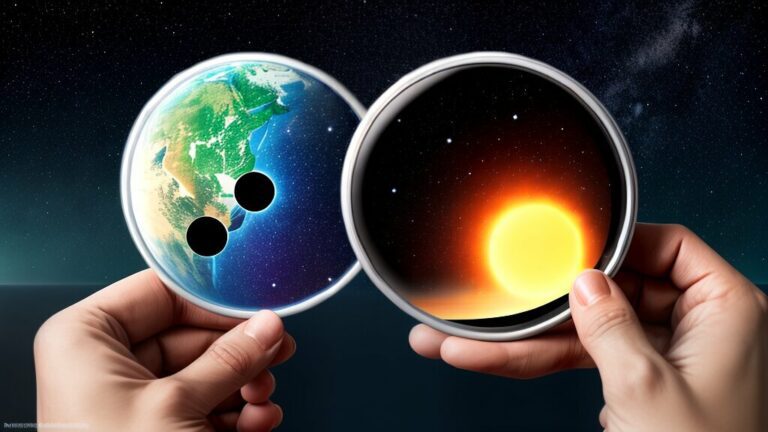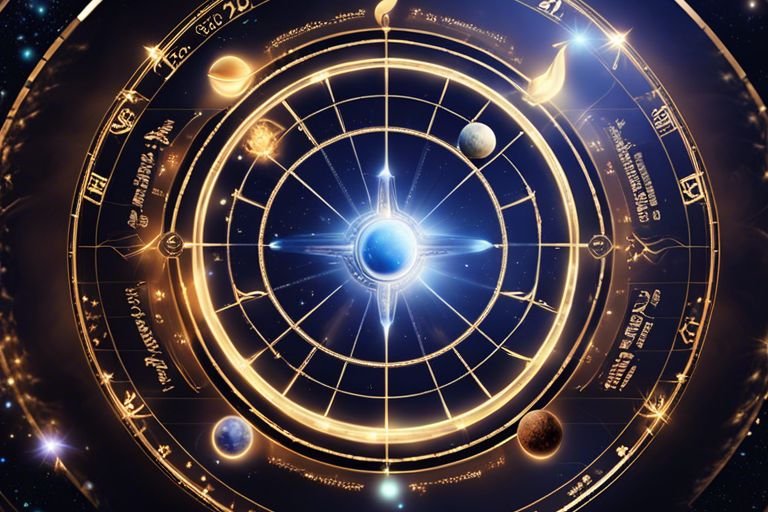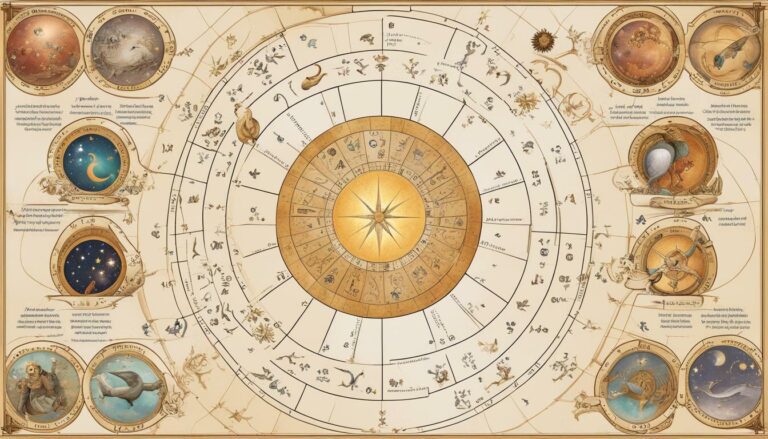Why is My Sun Sign Different in Vedic Astrology? Decoding the Mystery.
Have you noticed that your sun sign may be different in Vedic astrology compared to Western astrology? This can be confusing and even lead to skepticism about astrology as a whole. However, there are valid reasons behind these discrepancies. In this article, we will explore the differences between the two systems and uncover the mystery behind your sun sign variation in Vedic astrology.
Key Takeaways:
- Vedic and Western astrology use different methods to calculate sun signs, leading to discrepancies in the results.
- Understanding the fundamental principles of Vedic astrology can help clarify the differences in zodiac signs between the two systems.
- Vedic astrology uses sidereal zodiac, nakshatras, and dashas to calculate sun signs.
- Precession and the time gap between Vedic and Western astrology can also impact sun sign calculations.
- By unravelling the mystery and exploring the unique calculations and influences in Vedic astrology, we can better understand why your sun sign may differ in Vedic astrology compared to Western astrology.
Understanding the Basics of Vedic Astrology
Before we delve into the differences in sun signs between Vedic and Western astrology, it is important to understand the basics of Vedic astrology. The Vedic system, also known as Jyotish, is an ancient Indian system of astrology that has been practiced for thousands of years.
Unlike Western astrology, which primarily focuses on the sun sign, Vedic astrology takes a more holistic approach, considering the placement of all the planets at the time of a person’s birth. It also uses a different zodiac system called the sidereal zodiac, which is based on the actual positions of the constellations in the sky.
Another key difference in Vedic astrology is the use of nakshatras, or lunar mansions, which divide the zodiac into 27 smaller sections. Each nakshatra is associated with a particular deity and is said to have its own unique qualities and characteristics.
By understanding these fundamental differences, we can begin to grasp why there may be variations in sun signs between Vedic and Western astrology.
Zodiac Differences in Vedic Astrology
The Vedic zodiac is divided into 12 signs, just like the Western zodiac. However, the starting point of the zodiac is different. In Western astrology, the starting point is the position of the sun at the time of the spring equinox, while in Vedic astrology, it is the position of the fixed star Spica.
Additionally, the Vedic zodiac takes into account the precession of the equinoxes, which causes a shift in the positions of the zodiac signs over time. As a result, the Vedic zodiac is about 23 degrees behind the Western zodiac. This means that if you were born in late March or early April, your sun sign in Vedic astrology would likely be Pisces rather than Aries.
These differences in the zodiac system contribute to the variations in sun signs between Vedic and Western astrology.
Understanding Differences in Sun Signs Between Vedic and Western Astrology
While Western astrology primarily focuses on the position of the sun in determining a person’s sun sign, Vedic astrology takes into account the position of all the planets at the time of a person’s birth. This means that the calculations for a person’s sun sign in Vedic astrology are much more complex.
In Vedic astrology, the sun sign is calculated based on the position of the sun in the sidereal zodiac, as well as the person’s nakshatra and dasha, or planetary period. This can lead to some variations in sun signs between Vedic and Western astrology.
By understanding these fundamental differences in the calculations and approach of Vedic astrology, we can better understand the discrepancies in sun signs between the two systems.
Calculating Sun Signs in Vedic Astrology
Calculating sun signs in Vedic astrology involves a unique approach compared to Western astrology. Vedic astrology uses the sidereal zodiac, which takes into account the precession of the equinoxes and the shifting of the constellations over time. This means that the positions of the sun, moon, and planets are measured against the background of fixed stars, rather than the tropical zodiac used in Western astrology.
The sidereal zodiac is divided into 12 equal parts, or signs, each spanning 30 degrees of the zodiac. However, unlike Western astrology, which starts the zodiac with the sign of Aries, Vedic astrology begins with the sign of Aries at the point where the sun is during the Spring Equinox.
In addition to the zodiac, Vedic astrology uses nakshatras, or lunar mansions, to further divide the sky into 27 equal parts. Each nakshatra has a ruling planet, and the placement of planets in these nakshatras can provide insight into specific areas of life.
Vedic astrology also uses dashas, or planetary periods, to further refine predictions. Each dasha represents a period of time ruled by a specific planet, with the length of each dasha varying depending on the planet’s position in the chart.
All of these factors are taken into account when calculating someone’s sun sign in Vedic astrology, leading to variations compared to Western astrology. For example, someone born in late March to mid-April in Western astrology may be an Aries, but in Vedic astrology, they could be a Pisces, depending on the exact position of the sun, moon, and planets at the time of their birth.
It is important to note that while there may be discrepancies in sun sign between Vedic and Western astrology, both systems have their strengths and can provide valuable insights. It is up to the individual to determine which system resonates with them and provides the most accurate and helpful guidance.
The Influence of Precession and Time Gap
One of the main reasons for discrepancies in sun signs between Vedic and Western astrology is the influence of precession, or the earth’s wobble. This phenomenon causes the alignment of the zodiac signs to shift slightly over time. While Western astrology is based on the tropical zodiac, which is fixed to the seasons, Vedic astrology uses the sidereal zodiac, which is fixed to the position of the stars.
The difference between these two zodiacs is known as the ayanamsa, which currently stands at around 24 degrees. This means that when the sun enters Aries according to the tropical zodiac, it is actually in Pisces according to the sidereal zodiac. Hence, Vedic astrology considers the position of the sun against the backdrop of fixed stars, rather than the changing seasons.
Another factor contributing to differences in sun signs between Vedic and Western astrology is the time gap between the two systems. Western astrology is based on the Julian calendar, which was established in 45 BCE, while Vedic astrology follows the Hindu calendar, which has been in use for thousands of years.
The Hindu calendar has a slightly different number of days in a year compared to the Julian calendar, which leads to a difference in the position of the sun at any given time. This time difference can cause a shift of up to one zodiac sign between the two systems, further highlighting the variation in sun signs.
Deciphering sun sign differences in Vedic astrology requires an understanding of the influence of precession and the time gap between Vedic and Western astrology. By acknowledging these factors, we can better comprehend the unique calculations and zodiac differences in Vedic astrology.
Conclusion
By now, you should have a better understanding of why your sun sign may differ in Vedic astrology compared to Western astrology. The differences arise from the unique calculations and principles used in Vedic astrology, including the sidereal zodiac, nakshatras, and dashas. These methods provide a more precise and detailed understanding of your personality traits and life events.
Additionally, the impact of precession and the time gap between Vedic and Western astrology plays a significant role in sun sign discrepancies. The earth’s wobble affects the alignment of the zodiac signs over time, leading to variations in sun sign calculations.
Despite these differences, both Vedic and Western astrology offer valuable insights into spirituality and self-discovery. Whether you follow one or both systems, the ultimate goal is to gain a deeper understanding of yourself and your place in the universe.
Takeaway
Your sun sign may differ in Vedic astrology compared to Western astrology due to the unique calculations and principles used in Vedic astrology, as well as the impact of precession and the time gap between the two systems. Understanding the differences between these two systems can provide you with a more comprehensive understanding of your personality and life events.
FAQ
Q: Why is my sun sign different in Vedic astrology?
A: In Vedic astrology, the calculations for determining the sun sign are based on the sidereal zodiac, which takes into account the position of the stars and constellations. This is different from Western astrology, which uses the tropical zodiac based on the Earth’s seasons. As a result, there may be discrepancies in the sun signs between the two systems.
Q: How does Vedic astrology differ from Western astrology in terms of sun sign calculation?
A: Vedic astrology takes into account the sidereal zodiac, nakshatras (lunar mansions), and dashas (planetary periods) to calculate sun signs. This differs from Western astrology, which primarily focuses on the tropical zodiac. These different calculations and approaches contribute to the variations in sun signs between Vedic and Western astrology.
Q: What role does precession and the time gap play in sun sign differences in Vedic astrology?
A: Precession refers to the Earth’s wobble, which affects the alignment of the zodiac signs over time. As a result, the positions of the constellations have shifted since the time when Western astrology was first established. This time gap and shifting alignment contribute to the discrepancies in sun sign calculations between Vedic and Western astrology.






